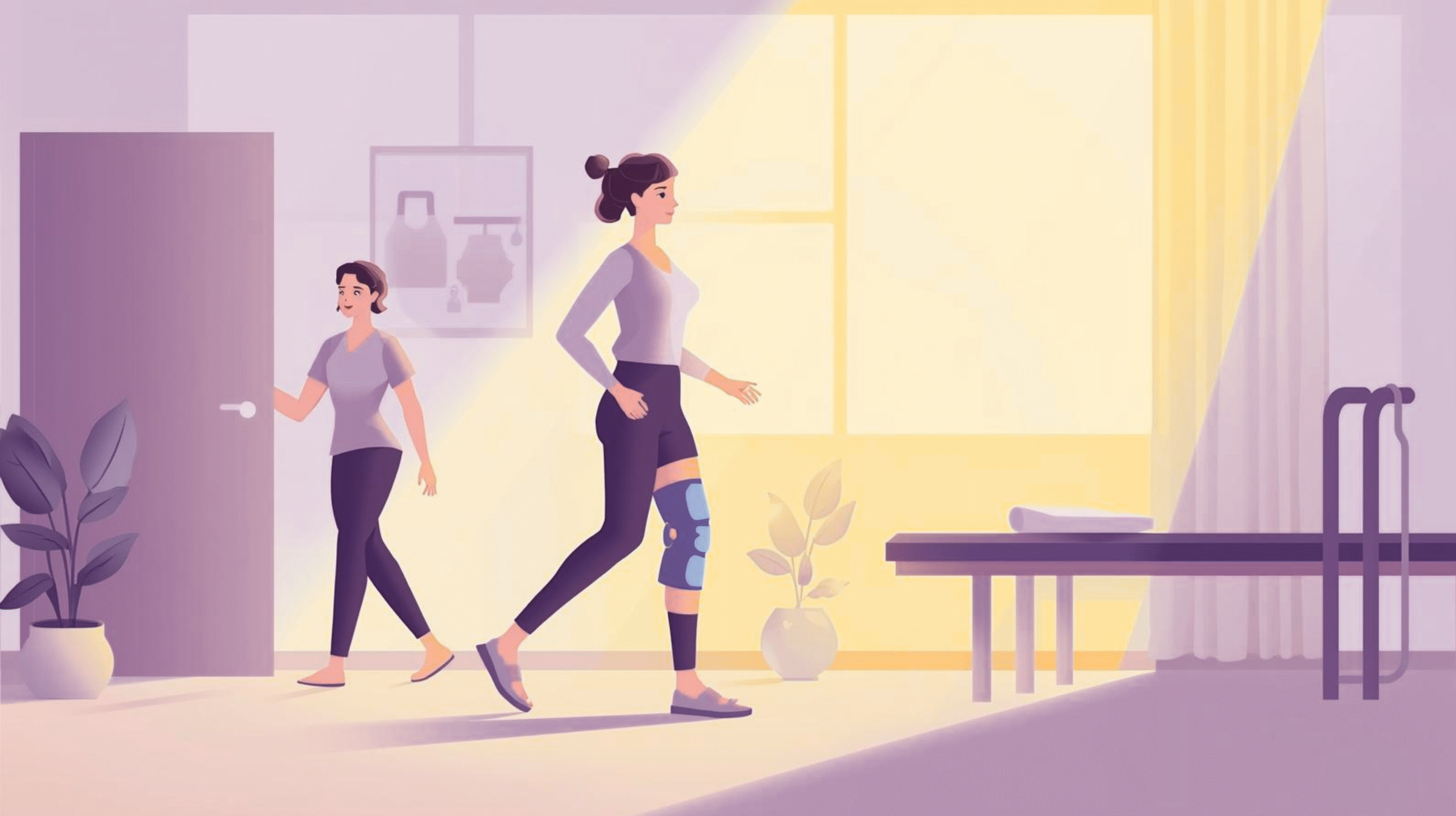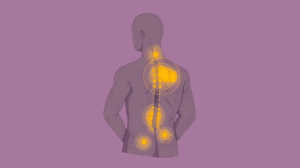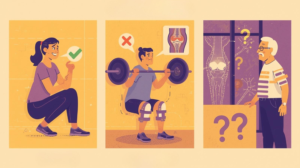Knee injuries, post-surgical recovery, and chronic knee pain are common issues that affect millions worldwide. To manage discomfort and stabilize the joint, many individuals rely on kneecaps (braces or sleeves). These devices have become essential tools for both rehabilitation and injury prevention.
A frequent concern among patients is, “Can you walk after knee capping?” Walking is a natural activity and an important part of recovery, but improper use of knee braces may lead to increased pain, delayed healing, or other complications [1].
This article provides an expert-guided overview of walking with a kneecap, including:
- Types of kneecaps and their effect on mobility
- Benefits of walking while wearing a kneecap
- Risks and precautions to consider
- Expert recommendations for safe walking
- Practical tips for long-term knee support
How Kneecaps Work?
Kneecaps are designed to provide compression, stability, and support for the knee joint. Their role in walking depends on the type of brace, severity of the injury, and the individual’s strength and flexibility.
Function of a Kneecap
- Compression: Reduces swelling and promotes circulation.
- Stabilization: Protects ligaments, tendons, and surrounding muscles from overextension or twisting.
- Pain Relief: Minimizes discomfort from arthritis, tendonitis, or post-surgery healing.
- Confidence in Movement: Enhances balance and allows safer walking.
Types of Kneecaps and Their Impact on Walking
- Compression Sleeves
- Made from elastic or neoprene materials.
- Provide mild support, reduce swelling, and keep the joint warm.
- Ideal for everyday walking, light exercise, or minor knee discomfort.
- Allows natural movement without restricting gait.
- Hinged Braces
- Include metal or plastic supports along the sides of the knee.
- Offer robust stabilization for ligament injuries or post-surgery recovery.
- Best for walking short distances initially, as long walks may cause fatigue due to restricted motion.
- Patellar Stabilizers
- Designed to align the kneecap during movement.
- Useful for patellar tracking disorders or kneecap instability.
- Supports proper knee mechanics during walking and prevents lateral shifts of the patella [2].
- Post-Surgery Immobilizers
- Restrict knee movement to protect healing tissues after ACL repair, meniscus surgery, or tendon reconstruction.
- Walking is often limited and monitored by a physiotherapist, as excessive movement may compromise recovery.
Each type of kneecap affects walking differently. Mild compression sleeves allow more natural mobility, while hinged or immobilizing braces provide stability but limit range of motion, making it essential to choose a brace that suits your activity level and recovery phase.
Comparison: Open vs. Closed Patella Knee Caps
Choosing the right knee cap plays a key role in walking comfort, stability, and recovery. Understanding the differences between open patella and closed patella knee caps helps explain the benefits of knee cap use, clarifies why wear knee support, and answers whether a knee cap helps knee pain during daily movement.
Open Patella Knee Caps
These knee caps have a circular opening over the kneecap.
Best suited for:
- Patellar tracking issues
- Mild to moderate knee pain
- Long-duration walking or standing
Benefits:
- Reduces pressure on the kneecap while walking
- Improves alignment and tracking of the patella
- Allows better airflow, reducing skin irritation
- Ideal as a knee cap for walking relief in patellofemoral pain or early arthritis
Closed Patella Knee Caps
These knee caps fully cover the kneecap with uniform compression.
Best suited for:
- General knee pain and swelling
- Arthritis-related stiffness
- Post-exercise or post-injury support
Benefits:
- Provides even compression for pain relief and swelling control
- Enhances warmth and circulation, aiding recovery
- Commonly recommended in orthopedic knee cap uses for joint stability
- Effective for people asking does knee cap help knee pain during prolonged walking
Which One Should You Choose?
- Choose open patella knee caps if kneecap alignment, pressure relief, or long walking duration is your main concern.
- Choose closed patella knee caps if you need overall compression, warmth, and general joint support.
Both designs support walking safely when used correctly and can significantly reduce joint discomfort when combined with proper fit, gradual activity progression, and strengthening exercises.
Benefits of Walking After Knee Capping
Walking while wearing a kneecap offers several important physical and mental benefits, contributing to both recovery and long-term knee health.
1. Maintains Mobility
- After an injury or surgery, immobility can lead to stiffness, reduced joint flexibility, and slower recovery.
- Walking with a kneecap promotes joint lubrication and keeps ligaments and muscles active and flexible.
- Even gentle movement encourages range-of-motion maintenance, which is crucial for avoiding long-term joint restrictions.
2. Promotes Recovery
- Walking enhances blood flow to the knee, supplying oxygen and nutrients needed for tissue repair.
- Gentle motion reduces edema (fluid buildup) and accelerates the healing process.
- Early, controlled walking under supervision can prevent complications like joint contractures or prolonged swelling.
3. Muscle Engagement
- Kneecaps support the joint, but muscles surrounding the knee must remain active to regain strength.
- Walking engages quadriceps, hamstrings, calves, and gluteal muscles, helping to prevent muscle atrophy that occurs during immobilization.
- Regular, controlled movement ensures balance and stability are restored gradually.
4. Mental Benefits
- Walking with a kneecap provides psychological reassurance, reducing anxiety about re-injury.
- Increases confidence in performing daily activities, improving independence.
- Encourages a positive mindset during rehabilitation, which is linked to faster recovery.
Risks and Precautions of Walking After Knee Capping
While knee caps provide support, stability, and pain relief, improper use especially walking with them can lead to complications or delayed recovery. Understanding the risks and taking proper precautions is critical for safe rehabilitation [3].
1. Overstraining the Knee
- What Happens:
Walking too soon, too far, or too fast after an injury or surgery can strain the ligaments, tendons, or muscles surrounding the knee.
- Consequences:
- Increased swelling and inflammation
- Delayed tissue healing
- Risk of re-injury or aggravation of the original condition
- Precautionary Measures:
- Start with short walking sessions 5 to 10 minutes and gradually increase distance as tolerated.
- Use a brace that provides appropriate support for your knee condition.
- Always follow the rehabilitation plan prescribed by a physiotherapist or orthopedic specialist.
- Example: After ACL surgery, walking without controlled progression can stretch the healing ligament, leading to setbacks in recovery. Gradual, brace-assisted walking ensures safe mobilization without compromising healing.
2. Incorrect Brace Fit
- What Happens:
A poorly fitted kneecap can either be too tight or too loose, affecting both comfort and knee function.
- Consequences:
- Too tight: Restricts blood flow, causing numbness, tingling, or swelling in the lower leg.
- Too loose: Moves out of place during walking, providing inadequate support, increasing the risk of knee twists or falls.
- Precautionary Measures:
- Measure your knee according to the manufacturer’s sizing guide.
- Adjust straps or sleeves for a snug fit that supports but does not compress excessively.
- Check for signs of poor circulation—coldness, tingling, or skin discoloration and adjust accordingly.
- Tip: Walking with a correctly fitted brace enhances stability, while improper fitting can worsen the injury or cause secondary problems.
3. Balance and Stability Issues
- What Happens:
Even with a kneecap, the knee may remain weak or unstable, especially during the early stages of recovery. Walking on uneven surfaces or stairs increases the risk of imbalance.
- Consequences:
- Higher likelihood of falls or accidental twists
- Secondary injuries to the ankle, hip, or lower back
- Reduced confidence during movement, leading to hesitation and altered gait patterns
- Precautionary Measures:
- Use assistive devices (cane, walker, crutches) if recommended by a physiotherapist.
- Walk on flat, even surfaces initially before progressing to uneven terrain.
- Focus on controlled, slow steps to ensure proper weight distribution and knee alignment.
- Tip: Strengthening the quadriceps, hamstrings, and glutes through exercises enhances knee stability and reduces reliance on external support [4].
4. Skin Irritation and Pressure Issues
- What Happens
Wearing a knee cap for prolonged periods can lead to friction, sweat accumulation, and skin irritation, particularly with non-breathable materials.
- Consequences:
- Redness, rashes, or itching
- Increased risk of fungal or bacterial infections
- Pressure sores in cases of overly tight or rigid braces
- Precautionary Measures:
- Choose a breathable material that wicks away moisture.
- Remove the knee cap periodically to allow the skin to air out and recover.
- Wash and dry the brace regularly to prevent bacterial growth and odor.
- Tip: Use soft padding or protective sleeves under the brace for sensitive skin to reduce friction and pressure points.
Expert Guidelines for Walking With a Knee Cap
During Activity
- Wear the kneecap only when movement or support is necessary.
- Avoid prolonged wear if sitting or resting for extended periods.
Proper Fit
- Ensure the brace is snug but not overly tight.
- Check for circulation issues, tingling, or redness during use.
Gradual Walking
- Begin with short distances and slow pace.
- Increase walking time gradually as tolerated, monitoring pain, swelling, or fatigue.
- Follow a structured progression plan advised by a physiotherapist.
Combine With Exercises
- Strengthen supporting muscles to reduce dependency on the brace.
- Recommended exercises:
- Quadriceps strengthening (e.g., straight leg raises, mini-squats)
- Hamstring stretches
- Calf raises for ankle and knee stability
Assistive Devices
- Use crutches, a cane, or a walker if recommended during early post-injury recovery.
- Gradually transition to independent walking once stability improves.
Tips for Safe and Effective Use of a Knee Cap
Proper use of a knee cap is essential to maximize its benefits while preventing complications such as muscle weakness, skin irritation, or restricted blood flow. Here are expert-backed tips for using knee caps safely and effectively:
1. Choose the Right Type and Size
- Select the appropriate brace for your condition:
- Compression sleeves for minor pain or daily support.
- Hinged braces for ligament injuries or post-surgery recovery.
- Patellar stabilizers for kneecap misalignment or tracking issues.
- Immobilizers for post-surgical or severe injuries.
- Proper sizing is critical:
- A brace that is too small can restrict blood flow, cause swelling, or lead to discomfort.
- A brace that is too large may shift during movement, reducing stability and increasing the risk of injury.
- Measure your knee circumference according to the manufacturer’s guidelines to ensure a snug but comfortable fit.
2. Take Breaks to Rest Skin and Muscles
- Even if the brace feels comfortable, avoid wearing it continuously for extended periods.
- Recommended practice: remove the knee cap every 2–3 hours to allow the skin and muscles to breathe.
- During breaks:
- Gently massage the knee area to stimulate circulation.
- Perform light stretches to maintain joint flexibility and prevent stiffness.
- Regular breaks reduce the risk of rashes, pressure sores, or fungal infections.
3. Maintain Hygiene
- Knee caps accumulate sweat, dirt, and bacteria during regular use, which can cause skin irritation or odor.
- Tips for maintaining hygiene:
- Wash the brace regularly according to the manufacturer’s instructions, usually with mild soap and cold water.
- Allow the brace to air dry completely before reuse; avoid direct heat sources that may damage materials.
- For braces with straps or hinges, wipe down metal or plastic parts to prevent rust or deterioration.
- Clean braces promote skin health, comfort, and long-term durability.
4. Monitor Pain and Discomfort
- Wearing a knee cap should reduce discomfort, not cause new pain.
- Stop wearing the brace immediately if you notice:
- Swelling, redness, or unusual warmth
- Numbness, tingling, or cold sensations
- Sharp pain during movement or walking
- Consult a physiotherapist or doctor if any of these symptoms persist. Timely adjustments can prevent long-term complications [5].
5. Combine with Strengthening and Flexibility Exercises
- Kneecaps provide external support but muscle strength and flexibility are crucial for joint health.
- Recommended exercises:
- Quadriceps strengthening: Straight leg raises, mini-squats
- Hamstring stretches: Standing or seated hamstring stretches
- Calf and glute activation: Heel raises, bridges
- Benefits of combining exercises with knee cap use:
- Reduces dependency on external support
- Enhances stability and balance
- Promotes long-term joint health and prevents recurrence of injury
Conclusion
Walking with a knee cap is generally safe and beneficial if done gradually, correctly, and under guidance. Knee caps provide stability, pain relief, and confidence, but must be used with proper fit, duration, and precautions to avoid muscle weakness, skin issues, or overstrain. Combining walking with muscle-strengthening and flexibility exercises, along with professional advice, ensures effective rehabilitation and long-term knee health.
Looking for more health and wellness solutions ? Don’t miss these related guides:-
Frequently Asked Questions:
1. Can I walk immediately after putting on a kneecap?
Generally, walking is safe if the brace is properly fitted, but follow medical advice after injury or surgery.
2. How far can I safely walk with a kneecap on?
Start with short distances (5–10 minutes) and gradually increase as tolerated, monitoring for discomfort.
3. Does walking with a kneecap help recovery?
Yes, it promotes circulation, maintains joint mobility, and engages muscles, accelerating healing.
4. Can I walk without a kneecap after an injury?
Only if the knee is stable and pain-free, typically after gradual rehabilitation and medical approval.
5. How tight should a kneecap be for walking?
Snug enough to support the knee, but not so tight that it causes numbness, tingling, or swelling.
References
- American Academy of Orthopaedic Surgeons. (2024). Knee braces and knee pain management. https://orthoinfo.aaos.org
- Cleveland Clinic. (2023). Knee brace use and walking post-injury. https://my.clevelandclinic.org
- Harvard Health Publishing. (2023). When to walk after knee surgery. https://www.health.harvard.edu
- Mayo Clinic. (2024). Knee pain treatment and rehabilitation. https://www.mayoclinic.org
- National Institute of Arthritis and Musculoskeletal and Skin Diseases. (2023). Knee health and recovery devices. https://www.niams.nih.gov























